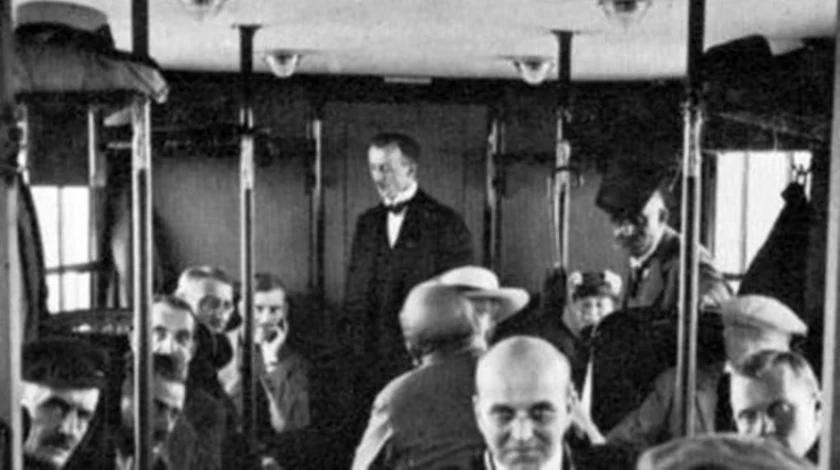The most common stereotype in aviation is that pilots are only for men, while flight attendants are only for women. But did you know that the first flight attendant in the world was a man?
Heinrich Kubis, the world’s first flight attendant, began working as a waiter on a zeppelin in 1912, was on board during the Hindenburg disaster, and survived.
The World’s First Flight Attendant
Heinrich Kubis began his career as a flight attendant 18 years before Ellen Church of United Airlines became the world’s first stewardess and before any fixed-wing airliner was large enough to carry a steward.
Kubis worked for the German airline DELAG and began caring for passengers on the zeppelin Schwaben in March 1912. He was the chief steward on all subsequent German passenger zeppelins, including the Bodensee, which made scheduled flights within Germany in 1919, the Graf Zeppelin, which offered regularly scheduled transatlantic service from 1931 to 1937, and the infamous Hindenburg.
Kubis worked alone on the early zeppelins, but he had an assistant steward and cooked aboard the 20-passenger Graf Zeppelin. He eventually led a team of 10-15 stewards and cooks aboard the Hindenburg, which carried 70 passengers. (Source: The Atlanta Journal Constitution)
Heinrich Kubis and the Fire on the Hindenburg
On May 6, 1937, Kubis was in the Hindenburg’s dining room when the ship caught fire in Lakehurst, New Jersey. When the Hindenburg got close enough to the ground for passengers and crew to jump from the windows, Kubis jumped to safety himself.
Kubis landed safely and was not injured in the crash. He testified at the Hindenburg disaster inquiry before returning to Germany, where he died in the 1970s. (Source: The Atlanta Journal Constitution)
Who was the World’s First Flight Stewardess?
Ellen Church, the first female flight attendant in history, made history on May 15, 1930, when she boarded a Boeing Air Transport flight from Oakland to Chicago for a 20-hour flight.
According to the National Air and Space Museum, Church was an Iowa nurse. She was a licensed pilot who hoped to be hired by a major airline, which was a far-fetched idea at the time.
On the other hand, Church approached Steve Simpson, the manager of San Francisco’s Boeing Air Transport office, with the then-radical idea of flying female nurses.
Church had aspired to be a pilot but realized she didn’t have a chance at the time. Instead, she persuaded Simpson and Boeing Air Transport, which was later renamed United Airlines, that having female employees would help alleviate the public’s fear of flying.
The church created the job description and training program for the original eight, the first class of eight stewardesses. Church and the other seven girls worked hard to prove to the male-dominated aviation industry that a woman could do the job. They provided critical assistance to passengers who were scared or ill. The flight attendants would take passengers’ tickets and serve lunch.
Church made 13 stops for 14 passengers on her first flight as a female stewardess. She had only served eighteen months when she was involved in an automobile accident.
She returned to nursing after her recovery, and her time as a stewardess was over. Her idea, however, transformed the airline industry. In 1965, she was killed in a horseback riding accident. (Source: The Atlanta Journal Constitution)
Image from Aviation Voice
